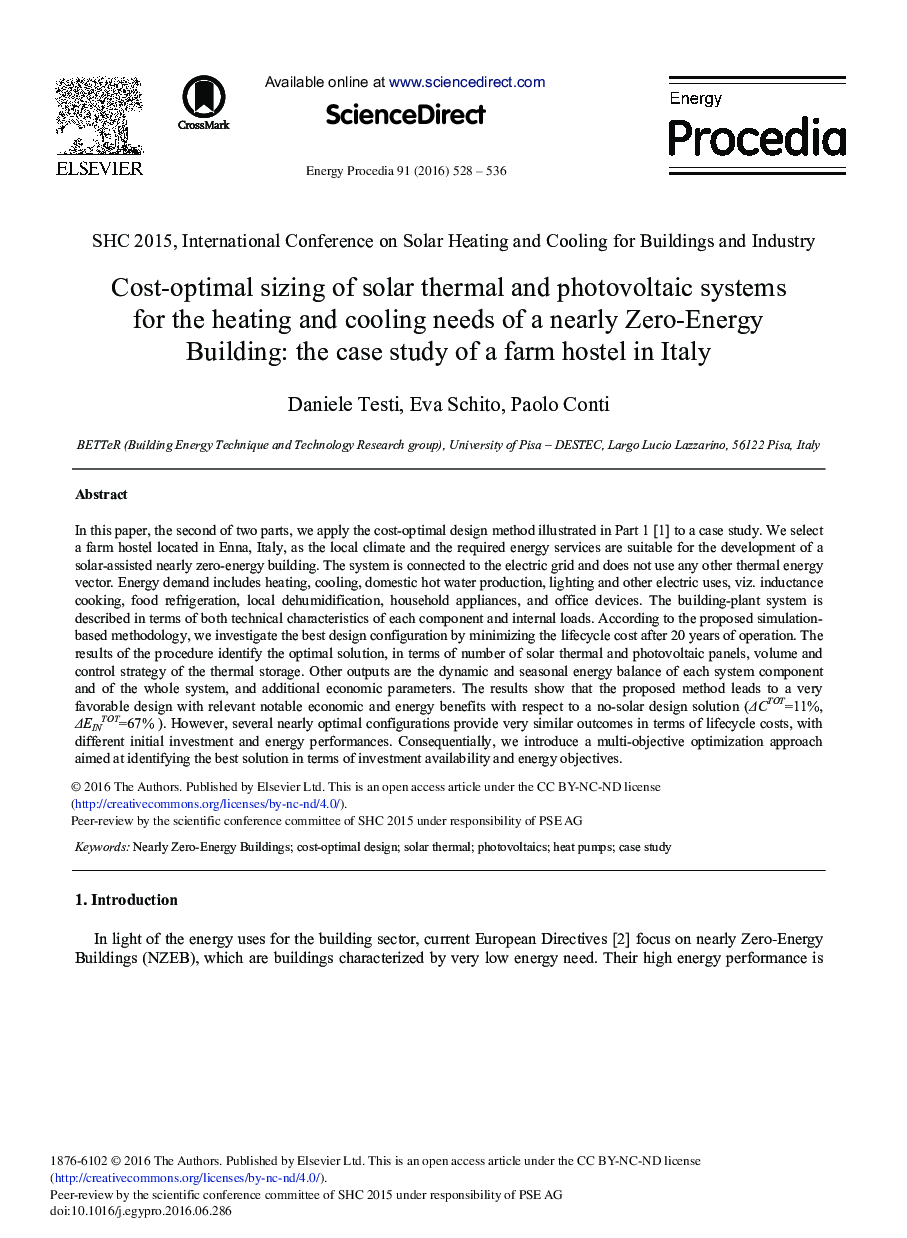| کد مقاله | کد نشریه | سال انتشار | مقاله انگلیسی | نسخه تمام متن |
|---|---|---|---|---|
| 1508682 | 1511144 | 2016 | 9 صفحه PDF | دانلود رایگان |
In this paper, the second of two parts, we apply the cost-optimal design method illustrated in Part 1 [1] to a case study. We select a farm hostel located in Enna, Italy, as the local climate and the required energy services are suitable for the development of a solar-assisted nearly zero-energy building. The system is connected to the electric grid and does not use any other thermal energy vector. Energy demand includes heating, cooling, domestic hot water production, lighting and other electric uses, viz. inductance cooking, food refrigeration, local dehumidification, household appliances, and office devices. The building-plant system is described in terms of both technical characteristics of each component and internal loads. According to the proposed simulation-based methodology, we investigate the best design configuration by minimizing the lifecycle cost after 20 years of operation. The results of the procedure identify the optimal solution, in terms of number of solar thermal and photovoltaic panels, volume and control strategy of the thermal storage. Other outputs are the dynamic and seasonal energy balance of each system component and of the whole system, and additional economic parameters. The results show that the proposed method leads to a very favorable design with relevant notable economic and energy benefits with respect to a no-solar design solution (ΔCTOT=11%, ΔEINTOT=67%). However, several nearly optimal configurations provide very similar outcomes in terms of lifecycle costs, with different initial investment and energy performances. Consequentially, we introduce a multi-objective optimization approach aimed at identifying the best solution in terms of investment availability and energy objectives.
Journal: Energy Procedia - Volume 91, June 2016, Pages 528–536
